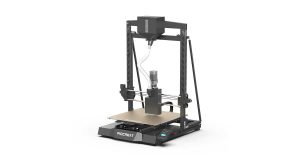A consortium of five Belgian companies and research centers wants to unravel the mystery of heart aging. And they are using an unusual environment to do so: space. As part of the AstroCardia project, they are developing a 3D bio-printed miniature of a human heart, complete with its associated circulatory system, to be sent to the International Space Station (ISS) in 2025.
Cardiovascular disease is a leading cause of death worldwide, and the risk increases with age. Yet there have been few reliable models to understand the biological processes behind it.
“Our heart changes as we age. It slowly gets bigger and stiffer, the arteries calcify and the pumping power deteriorates. In space, factors such as stress,microgravity and radiation cause those ageing processes to occur 20 times faster. So in space, we are speeding up time. And that gives us the uniqueopportunity to obtain research results that we simply cannot obtain here on Earth. The platform we will develop, will allow research into the mechanismsthat drive cardiac ageing. This research will be fully automated and can be operated remotely,” says Hilde Stenuit, researcher at Space Applications Services.
“The miniature heart, which is barely a chia seed’s size, faithfully mimics its human counterpart. The innovative technique would make it possible to better investigate cardiovascular diseases and test out some potential medicines. The biggest advantage is that we can personalise them by using stem cells fromthe patient themselves. As such, we can grow a miniature version of the patient’s heart. This would represent a great leap forward in personalised medicine. We are working towards that together!” says Dr Kevin Tabury, SCK CEN radiobiology expert.
For the AstroCardia project, researchers are using 3D bioprinting to create a heart-on-a-chip. This chip, just a few square millimeters in size, carries heart muscle cells made of a special “bio-ink.” This ink contains biomaterials and stem cells that can develop into any type of cell. An artificial circulatory system will supply the heart with oxygen and nutrients until it starts beating.
“Compare it to bricklaying a wall. The stem cells are thebricks, the bio-ink the mortar. Bio-ink is a kind of gel, which makes cells printable and in which they can survive during and after printing,” says Jasper Van Hoorick, CEO at BIO INX.
An artificial circulatory system, developed in collaboration with R&D company Antleron, will keep the chip stable in the extreme space climate.
“This project provides some valuable insights into the physiology of cardiac organoids. Therefore, it is very important that the chip on which we will print that miniature heart can handle the extreme conditions in space. We are honoured to be able to contribute to that with our knowledge,” says Jan Schrooten, CEO of Antleron.
With this space experiment, the partners hope to create a scientific model of heart aging.
“With this project, we are looking beyond the horizon. We are already concerned today with the problems society will face tomorrow. A healthy heart is important not only for those currently suffering from cardiovascular disease, but also for healthy astronauts exploring space,” concludes Martijn Reniers, CIO at QbD.
Subscribe to our Newsletter
3DPResso is a weekly newsletter that links to the most exciting global stories from the 3D printing and additive manufacturing industry.























